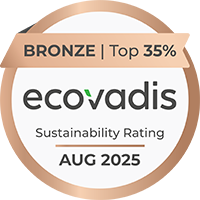What we mean by inclusive
Feeling valued, listened to, and accepted for the unique contribution you bring to the organisation regardless of background and level. Leaders create space and an inclusive environment for you to be able to fully contribute without risk or repercussion.
Why it matters:
- Being an inclusive organisation and individual creates trust, belonging and increases productivity
- More inclusive organisational decision making and outcomes
- Retention and development of existing talent
What good looks like:
Read the following description, and make notes on where you most want to improve inclusion in your organisation:
- We have frequent and meaningful conversations with people at all levels about what really matters to them.
- There are various tools and approaches we use that measure inclusion, and we report/communicate these results within the organisation.
- There are inclusion themed questions as part of our regular Employee Engagement (EE) or Pulse surveying. We are open and transparent in communications as to why we’re conducting the survey, what we will be doing with the data/information, as well as making it feel safe for people to be as honest as possible in their answers.
- We monitor the retention of people and provide exit interviews/questionnaire to people leaving the organisation, ensuring that we understand the reasons why people choose to stay at the organisation and also why they leave. This allows us to know what we are doing well and what could be done better.
- Organisational leaders speak openly about inclusion and consistently demonstrate inclusive behaviours.
- Leaders are given the training and support they need in order to increase and enhance their inclusive leadership skills.
- We consciously ask people to input on strategic decisions – decisions are not made about people but with people.
- Inclusion is embedded in all our processes - from onboarding to making sure our communication is accessible to everyone.
- We ensure people feel valued and that the work they do is acknowledged and recognised.
- We actively listen to everyone at all levels and make sure people who are marginalised feel psychologically safe to speak up without fear or risk of repercussion.
- We champion and advocate for authentic inclusion at every opportunity both internally and externally.
Common traps to avoid:
- Stop and start without any follow through – an inconsistency of approach
- Rewarding non-inclusive behaviours
- Listening but not following through on the action/s identified
- Not celebrating organisational achievements in inclusion and not celebrating/acknowledging cultural events that are important to colleagues
- Not communicating internal efforts externally
- Thinking education and awareness training is a “one and done” process
- Leadership not openly speaking about and communicating the importance of diversity, equity and inclusion.
- Only taking a grassroots upwards strategy for inclusion
- Believing inclusion is solely a HR issue
Possible actions to improve inclusion in your culture:
- Have a DE&I strategy. The strategy should:
a) Set clear targets and measure progress against them. For many organisations, doing this successfully requires improving the capture, storage and protection of data.
b) Use the data to help identify gaps
c) Set expectations around the behaviours you need to see
d) Ensure Senior Leaders know the role and part they play within the strategy; and can hold themselves to account in delivering the outcomes.
- Education and resources – Providing leaders and people at all levels with continuous education to upskill and offering accessible resources i.e inclusive leadership, bias, psychology safety training sessions.
- Put processes in place that capture people’s views and opinions, such as an Employee Engagement survey.
- Hiring for Culture-Add rather than for Culture-Fit. For example, instead of asking “are they a good cultural fit?” ask “how can they enrich our existing team culture?”
- Share your aim to increase inclusion and ask people what they’re like to see as a result. Decide what could make the greatest impact and pick a maximum of two or three initiatives to focus on.
- Make sure communication is inclusive and accessible. Identify and reduce wording bias (exclusionary terms surrounding gender, age and culture) that may be deterring for people. There are many apps you can use, such as Textio, Gender Decoder etc.
- Questions to ask Senior Leaders: a) What does inclusion mean to you? b) How do you think we can improve inclusion? c) How can we continue to learn and ensure that we are fostering a more inclusive workplace now and in the future? d) How can you personally champion inclusion?







